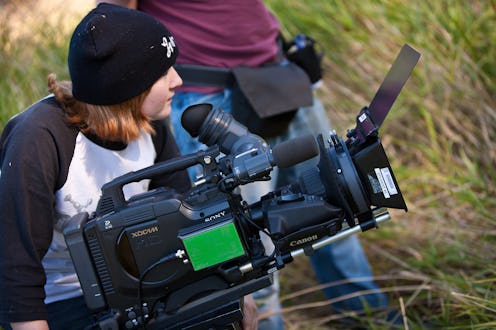
While we've seen some praiseworthy instance of progress in the film industry this year -- Katniss Everdeen as the first female hero with the top box office hit of the year, Jane Campion as the first female director named president of the Cannes jury, and Sundance's 2014 lineup promises some much needed gender balance -- but according to a new women in film study on Variety , these instances aren't yet making much of a difference.
According to the annual Celluloid Ceiling survey out of San Diego State University's Center for for the Study of Women in Film and Television, the number of women employed in film production is not only near 1998 levels, it's below them. So while it's important to praise the way in which the influence of Jennifer Lawrence's Hunger Games heroine is being felt throughout entertainment or why Campion's recognition as a director is huge, that alone is not enough to affect actual change in the industry.
The SDSU survey looked at 250 of the top-grossing U.S. films in 2013 and found that women only accounted for 16 percent of the film production work force, which is 2 percent below 2012 and one percent below 1998. While the percentage differences seem slight — and to some degree, they are — what's important to recognize is that seeing only a slight fluctuation and zero growth in these numbers means that there is so much more work to be done.
Women producers, directors, writers, P.A.s, grips, camerawomen, etc. are working against a decades old tide that's placed men at the top (and throughout the middle and bottom) of the film industry. In every part of the production process, there is an extreme majority of men; achieving quality in this industry is basically the Everest of feminist endeavors. There is so much mountain still left to move.
That's why, when we find and celebrate successes for women in the industry, it's important to recognize them and contextualize them within the still glaring gender disparity. Even The Hunger Games, which are about a woman and created by a woman, are films written and directed men. The only way to stem the tide and actually begin to change the industry from the inside — not just on occasional big screen adventures — is to act.
Women with the desire to work in film need to shirk the boy's club and go after jobs on set and in the production office and audiences who are concerned with women getting a better foothold in the industry need to support female filmmakers, writers, and producers by putting their dollars where their mouths are. Buy tickets to independent films backed by women and if your city doesn't have theaters that get indies, pay to rent them online. Because while the film industry is one based in art, the language it really speaks is in dollars.
Praise for women doing great work in film should never be underestimated, because our voices are infinitely valuable, but we can't forget the other ways in which we can play a concrete role in changing the industry, one small step at a time.
Image: Flickr/VancouverFilmSchool